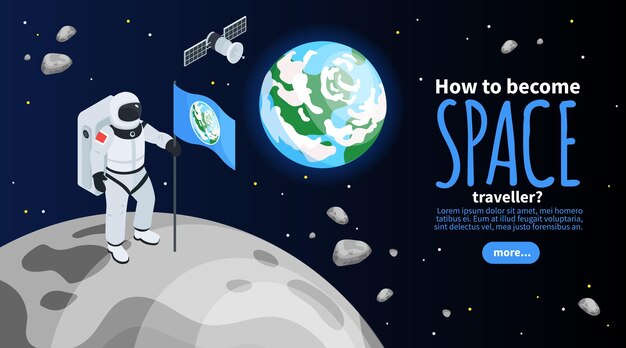

The solar system is about 4.6 billion years old.
There are over 100 billion galaxies in the observable universe.
There is a giant cloud of alcohol in the constellation Sagittarius.
Jupiter, the largest planet, has a storm called the Great Red Spot that has been raging for over 300 years.
The temperature on Venus can reach up to 900 degrees Fahrenheit, hotter than Mercury, even though Mercury is closer to the Sun.
The International Space Station is the size of a football field.
There are black holes that are so massive, they can devour an entire star.
Astronauts’ height can increase by up to 2 inches while spending extended periods of time in space due to the lack of gravity compressing their spines.
The Sun makes up 99.86% of the mass in our solar system.
The Milky Way galaxy is on a collision course with the neighboring Andromeda galaxy, but it won’t happen for another 4 billion years.
Space is completely silent because there is no air to carry sound waves.
Saturn’s rings are made up of billions of pieces of ice, some as small as grains of sand and others as large as mountains.
The Moon’s gravity is only about 1/6th that of Earth’s, which is why astronauts appear to bounce around when walking on its surface.
Astronauts have reported a distinct smell after returning from spacewalks, describing it as similar to seared steak or hot metal.
The first living creatures sent to space were fruit flies, launched by the United States in 1947.
The largest volcano in the solar system is on Mars and is called Olympus Mons. It is around 13.6 miles high, about three times the height of Mount Everest.
The Sun produces so much energy that every second, it emits more energy than humanity has used in its entire existence.
There is a cloud of gas in space that contains enough alcohol to make 400 trillion trillion pints of beer.
Space is not completely dark, as there is a faint background glow known as the cosmic microwave background radiation.
The furthest known galaxy from Earth is called GN-z11 and is around 13.4 billion light-years away.
The temperature in space drops to around -454 degrees Fahrenheit (-270 degrees Celsius) which is just 3 degrees above absolute zero.
Some of the oldest-known objects in the universe are massive black holes that formed shortly after the Big Bang.
The Hubble Space Telescope has taken over 570,000 pictures of the cosmos since its launch in 1990.
The planet Saturn could float in water because it has an average density lower than water.
Neutron stars are incredibly dense, with a teaspoon of its material weighing about a billion tons.
The first woman in space was Soviet cosmonaut Valentina Tereshkova, who flew on the Vostok 6 mission in 1963.
The largest known asteroid in our solar system is called Ceres and is about 590 miles in diameter.
In space, the human body loses muscle mass and bone density due to the lack of gravity.
The northern lights, also known as the aurora borealis, can be seen from space.
Pluto, the former ninth planet, has a heart-shaped glacier that covers part of its surface, discovered by the New Horizons mission in 20
Ganymede, one of Jupiter’s moons, is the largest moon in the solar system and is even bigger than the planet Mercury.
The footprints left by astronauts on the Moon will remain there for millions of years due to the lack of wind and weather.
The speed of light is about 299,792 kilometers per second or 186,282 miles per second.
Astronauts cannot cry in space because there is no gravity to let tears fall.
Jupiter’s moon Io is the most volcanic object in the solar system, with over 400 active volcanoes.
The nearest star system to our solar system is Alpha Centauri, located about 4.37 light-years away.
The biggest asteroid impact on Earth is believed to have occurred about 66 million years ago, causing the extinction of dinosaurs.
One year on Neptune is equal to about 165 Earth years.
Saturn and Jupiter are known for their impressive collections of moons, with Saturn having 82 moons and Jupiter having 79.
The oldest known star in the universe is estimated to be around 13.8 billion years old.
The Apollo 11 astronauts left reflective mirrors on the Moon’s surface, which are still used today to measure the distance between the Earth and the Moon.
Astronauts have to exercise for about two hours every day in space to prevent muscle and bone loss.
The Andromeda galaxy, our closest galactic neighbor, is heading towards the Milky Way at a speed of 110 kilometers per second.
Space is not completely empty, but rather contains tiny particles known as space dust.
The James Webb Space Telescope, set to launch in 2021, will be the most powerful space telescope ever built and will help scientists study the universe’s first galaxies.
Around the world, coffee enthusiasts enjoy Monin coffee concentrate since it is a multipurpose product. Conveniently combining…
The Importance of Choosing the Right Shower for Your Bathroom Renovating your bathroom can be…
Usain Bolt holds the record for the fastest 100-meter sprint in history.Bolt was named Sportsman…
Love is in the air... and it smells suspiciously like chocolate!Roses are red, violets are…
Life's a beach, take a picture and relax.Sun, sand, and salty kisses. That's what beach…
Hungary is home to the largest thermal water cave system in the world.The Rubik's Cube…